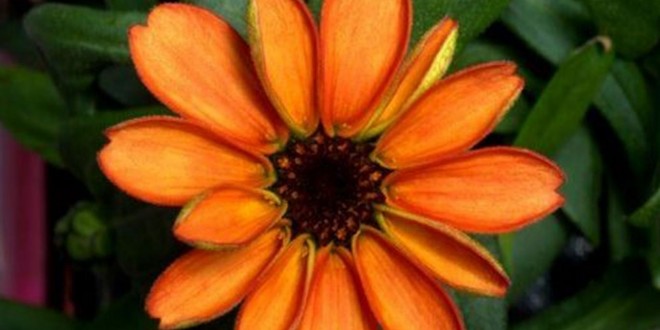First flower blooms in space aboard the International Space Station.
US astronaut Scott Kelly announced the historic news that a zinnia plant had flowered on the International Space Station (ISS) on his Twitter account, along with a photograph of an orange, 13-petalled flower.
Kelly, who has been in space since March 2015, said that there were other life forms in space as well, while introducing the orange-petal zinnia to the world. Later he posted another image of the flower captioning it, “out in the sun for the first time”.
Our plants aren't looking too good. Would be a problem on Mars. I'm going to have to channel my inner Mark Watney. pic.twitter.com/m30bwCKA3w
— Scott Kelly (@StationCDRKelly) December 27, 2015
The zinnia crop has been grown in a portable plant production system called the Veggie, which was placed at the International Space Station (ISS) to grow lettuce for astronauts in May 2014. The first crop, the red romaine lettuce, aboard the orbiting lab was harvested in August 2015.
Although the first produce failed, astronauts said that the experiments were “exceptional” for “deep space missions of autonomous gardening”.
“While the plants haven’t grown perfectly, I think we have gained a lot from this, and we are learning both more about plants and fluids and also how better to operate between ground and station. Regardless of final flowering outcome we will have gained a lot,” Nasa’s team leader for the Veggie plant growth facility Dr Gioia Massa said in a statement.
Some of my space flowers are on the rebound! No longer looking sad! #YearInSpace pic.twitter.com/HJzXaTItIf
— Scott Kelly (@StationCDRKelly) January 8, 2016
After successfully harvesting lettuce in zero gravity, scientists opted to grow the zinnia flower not for their beauty, but as part of their experiment to understand how plants flower or grow in microgravity, the space agency said in its blog.
“The zinnia plant is very different from lettuce. It is more sensitive to environmental parameters and light characteristics,” Veggie project manager Trent Smith said.
He added that growing a flowering crop like the zinnia in space is more challenging as it has a long growth duration which lasts between 60 and 80 days.
“Growing the zinnia plants will help advance our knowledge of how plants flower in the Veggie growth system, and will enable fruiting plants like tomatoes to be grown and eaten in space using Veggie as the in-orbit garden,” Smith wrote in a blog in November.
Agencies/Canadajournal

 Canada Journal – News of the World Articles and videos to bring you the biggest Canadian news stories from across the country every day
Canada Journal – News of the World Articles and videos to bring you the biggest Canadian news stories from across the country every day

